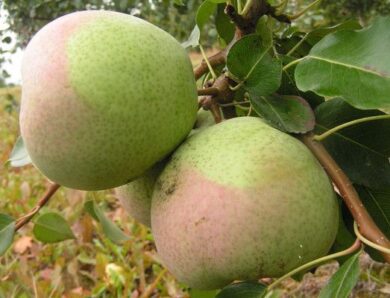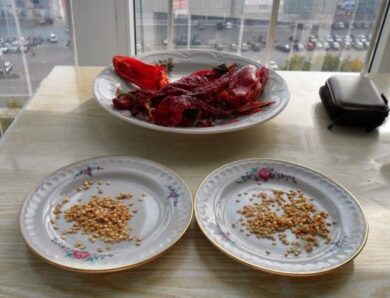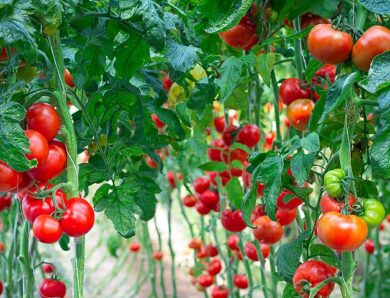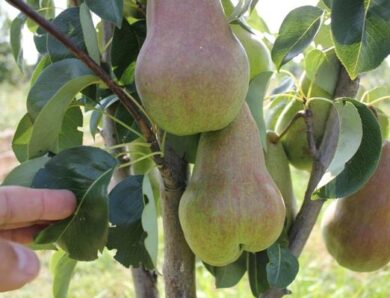Orlik apple tree: description and main characteristics of the variety
There are many different varieties of apples, each of which has its own unique characteristics. One of them is the Orlyk apple variety, and, for, to acquaint you with its many benefits, give a detailed description of this species.
Variety description
Orlyk belongs to the winter varieties and collects numerous positive reviews from farmers in different regions. It was bred by Soviet breeders more than fifty years ago (a hybrid of Macintosh and Bessemyanka Michurinskaya). Ever since, thanks to various improvements, Orlyk can be considered an elite variety, which has been valued for many years for its high resistance to disease and ability to withstand low temperatures.
Main characteristics
Orlyk apple tree is not very impressive in size. This tree is medium-sized, which can not boast of a thick crown. Skeletal branches are located at right angles, and their tips extend upwards. The bark is smooth and yellowish. The plant has large leaves, which are rough to the touch and covered with fluff, the root is quite thick and not very long. The flowers in the apple tree are quite large and beautiful, as the bud opens, the transition from deep pink to white.
Orlik bears fruit not too big apples, taking a conical shape. The skin is very smooth to the touch, has a pronounced glossy shine. The apples themselves are quite small - the average weight of the fruit reaches 120 grams. During the final ripening of the fruit becomes light yellow, and the integumentary color of the fruit is close to pink. Orlik's flesh is extremely juicy, cream color, on a consistence - dense enough. The fruits have a sweet and sour taste and a fairly high percentage of sugars (11%) and vitamin C.
Landing
The best time to plant apple trees of this variety is early spring or mid-autumn, on 2-3 weeks before the first frosts. Spring plantings will have a good effect on young seedlings, which should be sufficiently strengthened before the first winter, but if the tree is more than two years - you can plant in the fall. In general, autumn plantings are the most characteristic for this variety, because it has good resistance to low temperatures, and is able to easily survive the winter.
The peculiarity of this tree is that, that unlike his fellows he is not very light-loving, and an interval between trees of two meters is quite sufficient for a normal harvest. Due to this property, for Orlinka it will be quite simple to find a place on any site.
Pollinators and care
In order to pollinate the flowers of this plant, it is necessary to use different varieties of pollinators. To choose, which variety is most suitable for your site - you need to read the relevant literature, where a detailed description of possible pollinator varieties is given. In general, for pollination it is recommended to choose autumn or winter apple trees, and the most compatible is called Lobo, March and Green May.
This plant is unpretentious, and care for him is not significant, but there are some nuances. So, keep that in mind, that excess moisture leads to root rot. Young seedlings (to 5 years) abundant watering is not required, but for more mature plants it is necessary to 8 bucket of water. Watering is carried out before bud burst, after flowering and a few weeks before harvest. Be sure to loosen the soil after watering.
In the spring, when the apple tree is especially in need of nutrients, you can fertilize. To do this, use different mixtures, which contain nitrogen. But in the fall, such supplements are not recommended, instead, the trees are fertilized with humus.
Harvesting and storage
Orlyk's fruits ripen by mid-September. This variety gives a significant yield: in adult trees it ranges from 80 to 120 kg from one tree, and in those, just entered the period of fruiting - reaches 35 kg. The apple tree begins to bear fruit at an early age 4-5 years, which can be considered a fairly short time.
You need to collect the fruit very carefully, avoiding even minor damage, therefore, it is recommended to pluck the stalk together with the fruit itself. It cannot be allowed, so that the fruits began to fall en masse from the tree, they can fight. For the same reason it is forbidden to shake an apple-tree, no matter how convenient the harvest, it may seem. You can pick the fruit by hand or use special devices to properly remove apples from the tree.
To preserve the fruit, each is wrapped in paper and stacked in a wooden box. It is best to store them in the cellar, at temperature +1 – +3 degrees, with good ventilation.
Diseases and pests
One of the plagues is cytosporosis. It is a fungal disease, which looks like, as dark spots on the surface of the tree. Against him effectively use the tool "Hom". Another fungal disease is powdery mildew. It affects the leaves of the tree and looks, as a whitish plaque. Scor and copper chloride are used here. Against scabies, to which, however, the tree is quite stable, help "Topaz" or "Hom".
Pros and cons
Orlyk's advantage is considered to be high yields, which, in addition, it increases every year. in addition, due to its small size, it takes root perfectly in any area, because it can be located relatively close to other trees. The disadvantage is the fall of some fruits on the ground when ripe, what, given the benefits, seems quite insignificant.
Video "Review of winter varieties of apples"
In this video you will learn about the variety of winter apple varieties.




